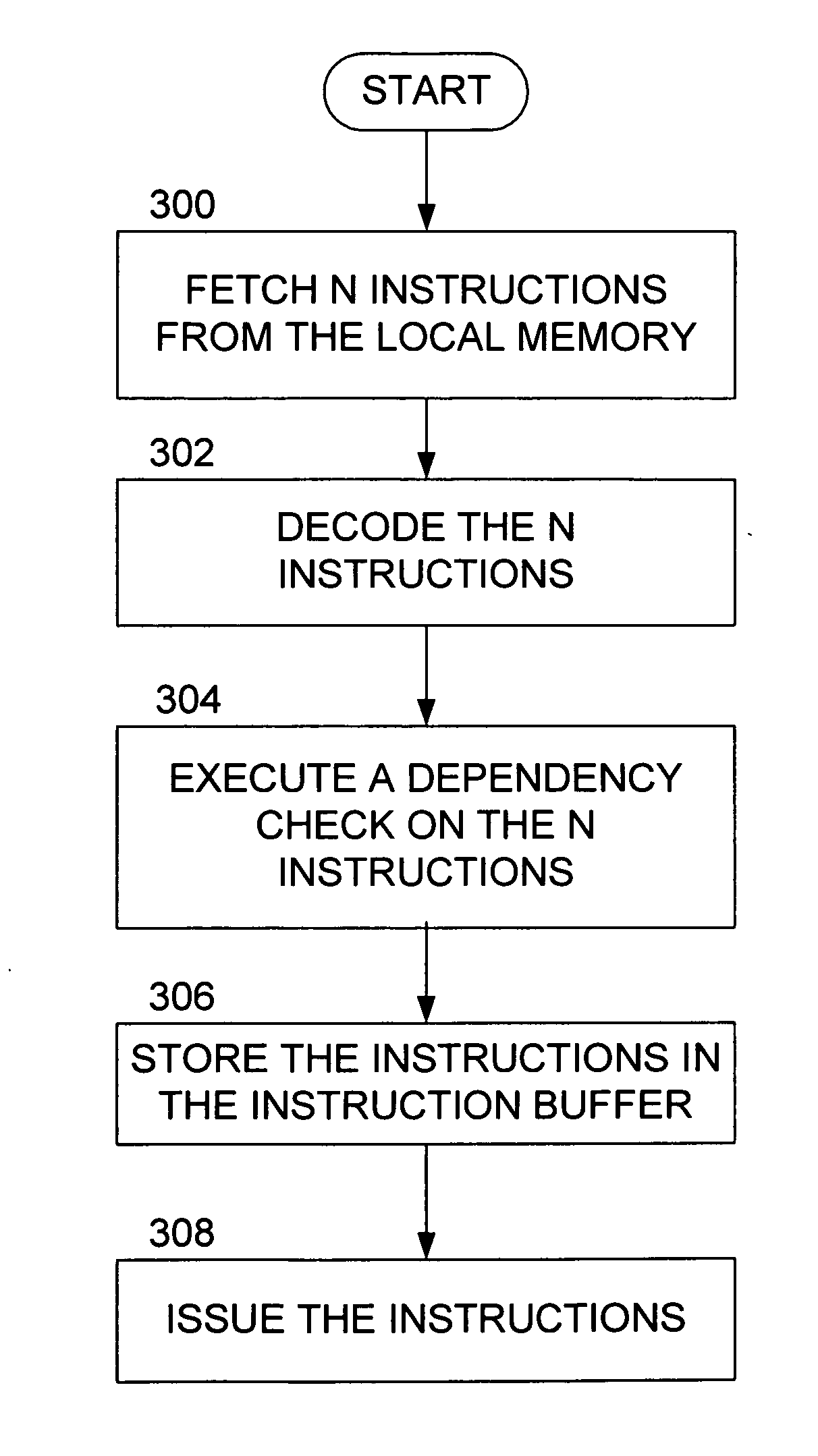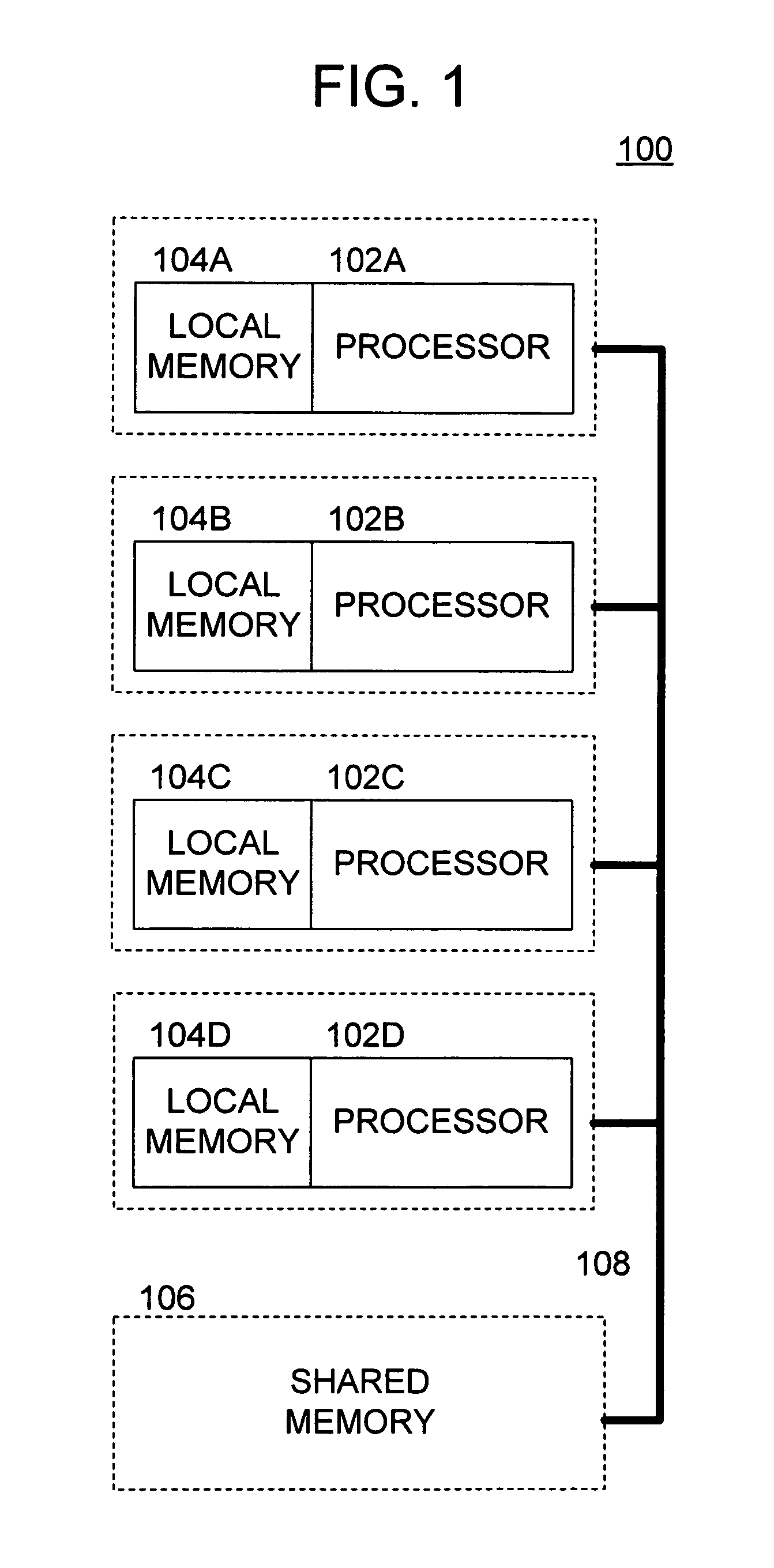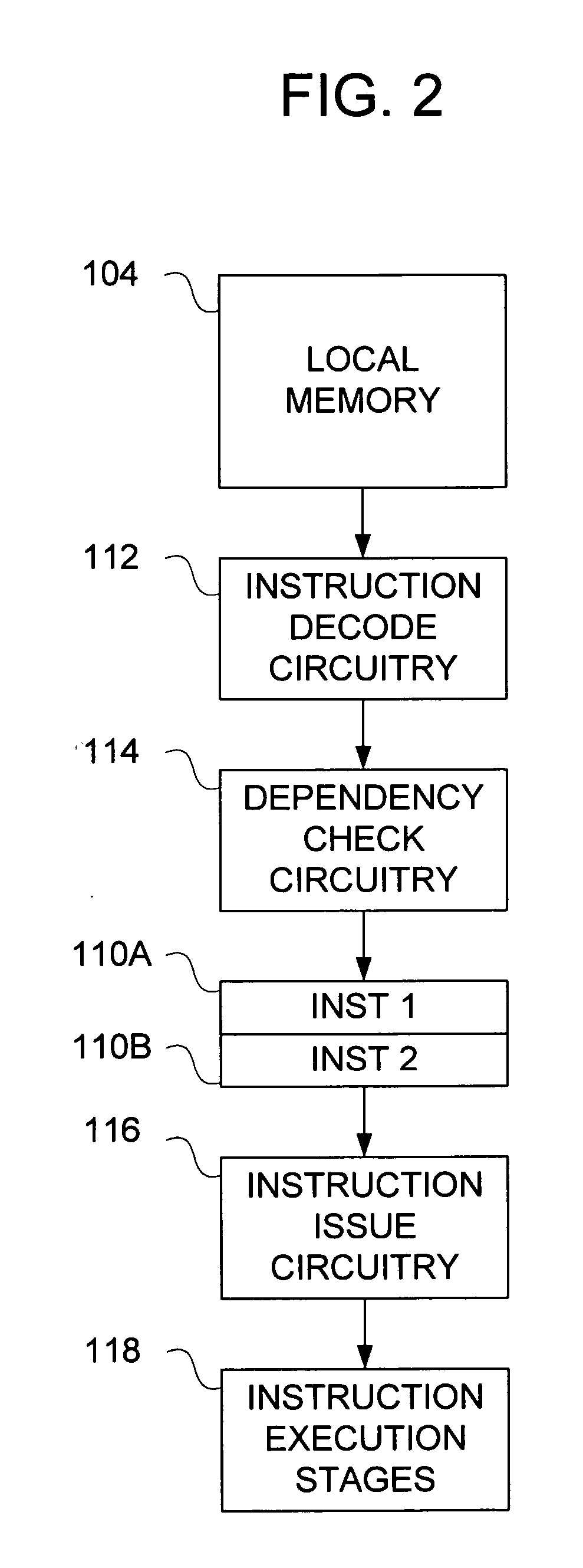Methods and apparatus for processing instructions in a multi-processor system
- Summary
- Abstract
- Description
- Claims
- Application Information
AI Technical Summary
Benefits of technology
Problems solved by technology
Method used
Image
Examples
Embodiment Construction
[0028] With reference to the drawings, wherein like numerals indicate like elements, there is shown in FIG. 1 a processing system 100 suitable for implementing one or more features of the present invention. For the purposes of brevity and clarity, the block diagram of FIG. 1 will be referred to and described herein as illustrating an apparatus 100, it being understood, however, that the description may readily be applied to various aspects of a method with equal force.
[0029] The multi-processing system 100 includes a plurality of processors 102A-D, associated local memories 104A-D, and a shared memory 106 interconnected by way of a bus 108. The shared memory may also be referred to herein as a main memory or system memory. Although four processors 102 are illustrated by way of example, any number may be utilized without departing from the spirit and scope of the present invention. Each of the processors 102 may be of similar construction or of differing construction. The processors...
PUM
 Login to View More
Login to View More Abstract
Description
Claims
Application Information
 Login to View More
Login to View More - R&D
- Intellectual Property
- Life Sciences
- Materials
- Tech Scout
- Unparalleled Data Quality
- Higher Quality Content
- 60% Fewer Hallucinations
Browse by: Latest US Patents, China's latest patents, Technical Efficacy Thesaurus, Application Domain, Technology Topic, Popular Technical Reports.
© 2025 PatSnap. All rights reserved.Legal|Privacy policy|Modern Slavery Act Transparency Statement|Sitemap|About US| Contact US: help@patsnap.com



